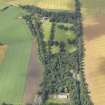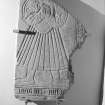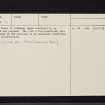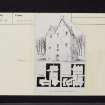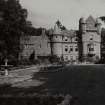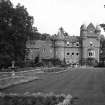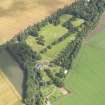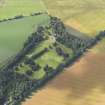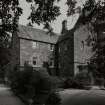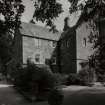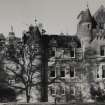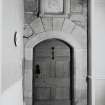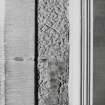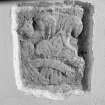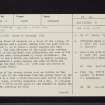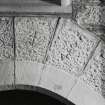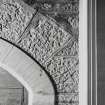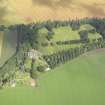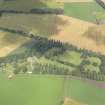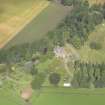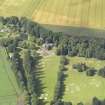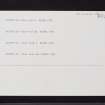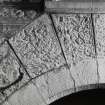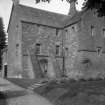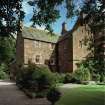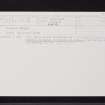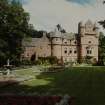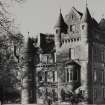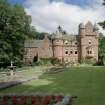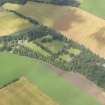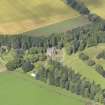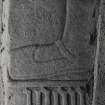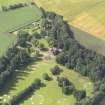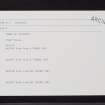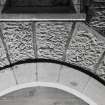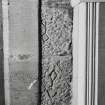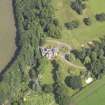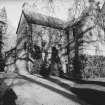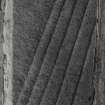Following the launch of trove.scot in February 2025 we are now planning the retiral of some of our webservices. Canmore will be switched off on 24th June 2025. Information about the closure can be found on the HES website: Retiral of HES web services | Historic Environment Scotland
Lethendy House
Country House (Medieval), Cross Slab (Medieval), Grave Slab (Medieval), Pictish Symbol Stone (Pictish), Tower House (Medieval)
Site Name Lethendy House
Classification Country House (Medieval), Cross Slab (Medieval), Grave Slab (Medieval), Pictish Symbol Stone (Pictish), Tower House (Medieval)
Alternative Name(s) Tower Of Lethendy; Lethendy Tower
Canmore ID 28930
Site Number NO14SW 13
NGR NO 14053 41695
Datum OSGB36 - NGR
Permalink http://canmore.org.uk/site/28930
- Council Perth And Kinross
- Parish Lethendy
- Former Region Tayside
- Former District Perth And Kinross
- Former County Perthshire
Medieval sculptures NO 1405 4170 New, previously unrecorded details of two medieval sculptures at the Tower of Lethendy have become available in the wake of the conservation and re-siting of the stones. Both were formerly in use as staircase lintels in the 16th-century L-plan tower house (NO14SW 13.00) and have now been erected in the body of the house. This note is confined to issuing a description of the previously unrecorded elements of the sculptures; for the already recorded elements see PSAS 104 (1971-2), 238-40.
The earlier of the two pieces is a 9th-century cross-slab, the full height of which is 1.35m. On the previously recorded face, the head of the angel is now fully visible, along with the rounded or arched top of the slab and an irregularly shaped tang, which bears a small secondary slot cut into its face. The previously unrecorded broad face bears a combination of a cross, figures and geometric patterns.
The cross is of double-square hollow form with a shaft. The upper arm survives intact, the side arms are damaged and the central portion of the cross-head and the entire shaft have been removed by the cutting of a secondary, shallow slot which runs to the bottom edge of the stone, angling to the right before exiting. The pattern on the upper arm comprises a pair of interlaced oval rings, interlaced with a two-cord twist that springs from the cross-head.
Directly beneath the cross arms, to the right and left of the erased shaft, are two truncated panels of broadly cut key pattern. Below the left side panel is a standing human figure staring out at the viewer. Its entire right side has been erased by the secondary slot. The figure has curly hair, in the same style as is seen in profile on the harp-playing figure on the opposite face. The figure's left arm angles down across the body and the figure may be wearing a belted tunic. Most of the left leg and foot is badly damaged.
On the right side of the shaft, below the key pattern, is a single panel of broad interlace forming a double knot. Beneath this, and apparently walking up the shaft, is an animal with a large head, small rounded body and tight curly tail. The head has pronounced ears and an open mouth with large teeth. It either has a very large tongue or is holding something in its mouth. It has a distinctly furrowed snout. Like the presumed dog on the opposite face, it wears a collar. The feet have been truncated by the cutting of the secondary slot. It seems to be an animal with both dog-like and pig-like elements. The key pattern previously recorded on one of the narrow faces continues over the narrow top of the stone and down the previously unseen narrow face.
There are a range of decorative, stylistic and shape characteristics which suggest links between the Lethendy cross-slab and the sculptures at Meigle. The original location of the cross-slab remains unknown, though Clunie, less than 2 miles away, and with its early church site, royal place of assembly and findspot of several 9th-century brooches, must be a strong contender. The slab is also significant in demonstrating at least three phases of re-use. A profusion of cut and blade sharpening marks (either prosaic sharpening or made in conjunction with oath-taking) on all its surfaces suggest that it was still standing somewhere when so used. The two slots, one small and the other running nearly the full length of the opposite face, appear to be related to its architectural re-use phase, prior to their use as lintels. Further work is required to try and elucidate the precise purpose of the slots.
The second sculpture is an early 16th-century incised effigy slab, now visible to just over twice its original width. The right side of the male figure is now visible. Although still lacking a head, both hands are intact and joined in prayer across the waist. A large, central purse or apron hangs down from the belt. The loose, puff-sleeved gown with tightly pleated lower skirt is now clear in all its symmetry. Like the left foot, the right foot is turned out 180o and wears a round-toed, broad shoe with a strap-fastening below the ankle and cut-away over the instep. Part of the right-hand edge
survives with further elements of its black-letter inscription, which are pending more detailed analysis. The back is plain and rough with a lip along the bottom edge.
M Hall 2005.
NO14SW 13.00 14053 41795
(NO 1405 4170) Tower of Lethendy (NR)
OS 6" map (1959).
NO14SW 13.01 NO 1405 4170 Pictish Cross-slab
NO14SW 13.02 NO 14514 41948 East Lodge
NO14SW 13.03 NO 14038 41880 West Lodge
NO14SW 13.04 NO c. 1405 4165 Sundial
The Tower of Lethendy is a tower of the L-plan, of three storeys and a garret, dating from the late 16th or early 17th century, on to which a modern mansion has been grafted. The main features of the early house survive, although it has suffered some alterations and some of its walls have been strengthened by large buttresses.
The doorway on the E front, now covered by modern building, once possessed a panel bearing the arms of Heron and reputedly the date 1678.
N Tranter 1963; D MacGibbon and T Ross 1889
NMRS REFERENCE:
Lethendy Tower.
Architect: Andrew Heiton Junior. 1883 - additions.
EXTERNAL REFERENCE:
Lethendy Tower.
Plans: Set of plans dated 1883 kept at Lethendy Tower.
Publication Account (1974)
One of two carved stones used as lintels on the first flight of the staircase from the ground floor to the entresol is a 10th century Picto-Scottish slab carved in relief with an angel, clerics, musicians and a dog. It probably stood in a field nearby until it was removed to repair the staircase, possibly in 1678.
I Fisher and F A Greenhill 1974
Field Visit (12 November 1975)
The Tower of Lethendy (name verified) is as described and planned. The 10th century Picto-Scottish slab incorporated in the stairway is in excellent condition.
Visited by OS (NKB) 12 November 1975.
Field Visit (19 April 1989)
An L-plan tower-house, probably of late 16th-century date, is incorporated into the rear of Lethendy House (1884 and later). It stands three storeys and an attic in height, comprising a main block with overall measurements of 11.3m from W to E by 7m transversely, and a wing of 12m from N to S by 5m transversely. It has been remodelled more than once; the outer walls have been thickened at ground-floor level to counteract the thrust of the vault, and were later buttressed. The position of the original doorway is not apparent, but straight-joints and later blocking in the masonry suggest that it was probably in the SW re-entrant angle, where there is now a window.
In a panel above the repositioned doorway in the E wall of the main block, there is a shield bearing the arms of the Heron family; MacGibbon and Ross (1889, 591) also note the date 1678 (probably the date at which the tower was first remodelled, cf. Fisher and Greenhill 1974, 238, 241).
In reuse as lintels to the staircase there are two slabs which have come from elsewhere. One of these is Pictish (NO14SW 13.01), the second is a fragment of a fine medieval grave-slab, probably of early 16th-century date, which bears the incised outline of a figure in civil dress (of which only part is visible) and the letters 'NBUL'; this is possibly the tombstone of Dean William Turnbull, Procurator of the Charterhouse, Perth, who is on record in 1503. At ground-floor level, at the W end of the vaulted N wall in the main block, there is a carved fragment which may have been detached from an armorial.
Visited by RCAHMS (IMS), 19 April 1989.
New Statistical Account (NSA) 1845; D MacGibbon and T Ross 1889; I Fisher and F Greenhill 1974.














































